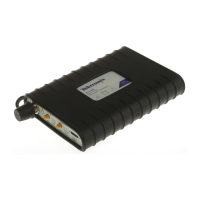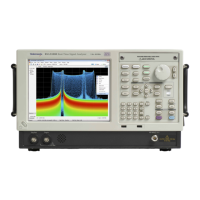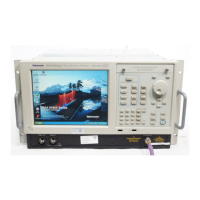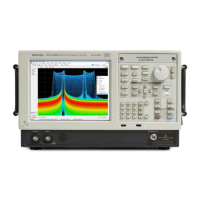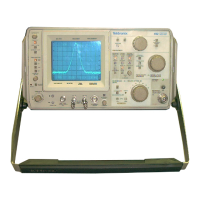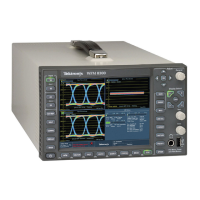Performance ver
ification
Amplitude accuracy at all center frequencies
Amplitude accuracy is tested for four different reference levels which exercises the different RF gain conditions used in
the RSA306B.
1. Connect the signal generator, power splitter, power sensor, power meter, and RSA306B as shown. Connect the power
sensor and RF signal generator directly to the power splitter, which is connected directly to the RSA 306B.
2. Reset the RSA306B to factory defaults (Presets > Main).
3. Run the RSA306B alignment procedure (Tools > Alignments > Align N ow).
4. Set the RSA 306B as follows:
a. Reference Level = +20 dBm
b. Detection = +PEAK (Setup > Settings > Traces > Detection > +PEAK)
c. Filter shape = Flat-Top (Setup > Settings > B W > Filter Shape > Flat-top)
d. Center Frequency: as listed in the amplitude accuracy tabl
es. (See Table 5.) (See Table 6.) (See Table 7.) (See
Table 8.)
e. Span:
For CF < 1 MHz, Span = 100 kHz
For 1 MHz CF 30 MHz, Span = 1 MHz
For C F 30 MHz, Span = 10 M Hz
d. RBW:
ForCF<1MHz,RBW=1kHz
For 1 MHz CF 30 MHz, RBW = 10 kHz
For CF > 30 MHz, RBW = 100 kHz
5. Set the signal generator output amplitude to +12 dBm. The RF amplitude at the power sensor and RSA306B i
nput
= +6 dBm nominal.
6. Set the signal generator frequency to the first frequency in the +20 dBm reference level accuracy table. (See Table 5.)
7. Set the RSA306B center frequency to the same frequency. (See Table 5.)
18 RSA306B Specifications and Performance Verification
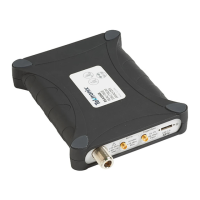
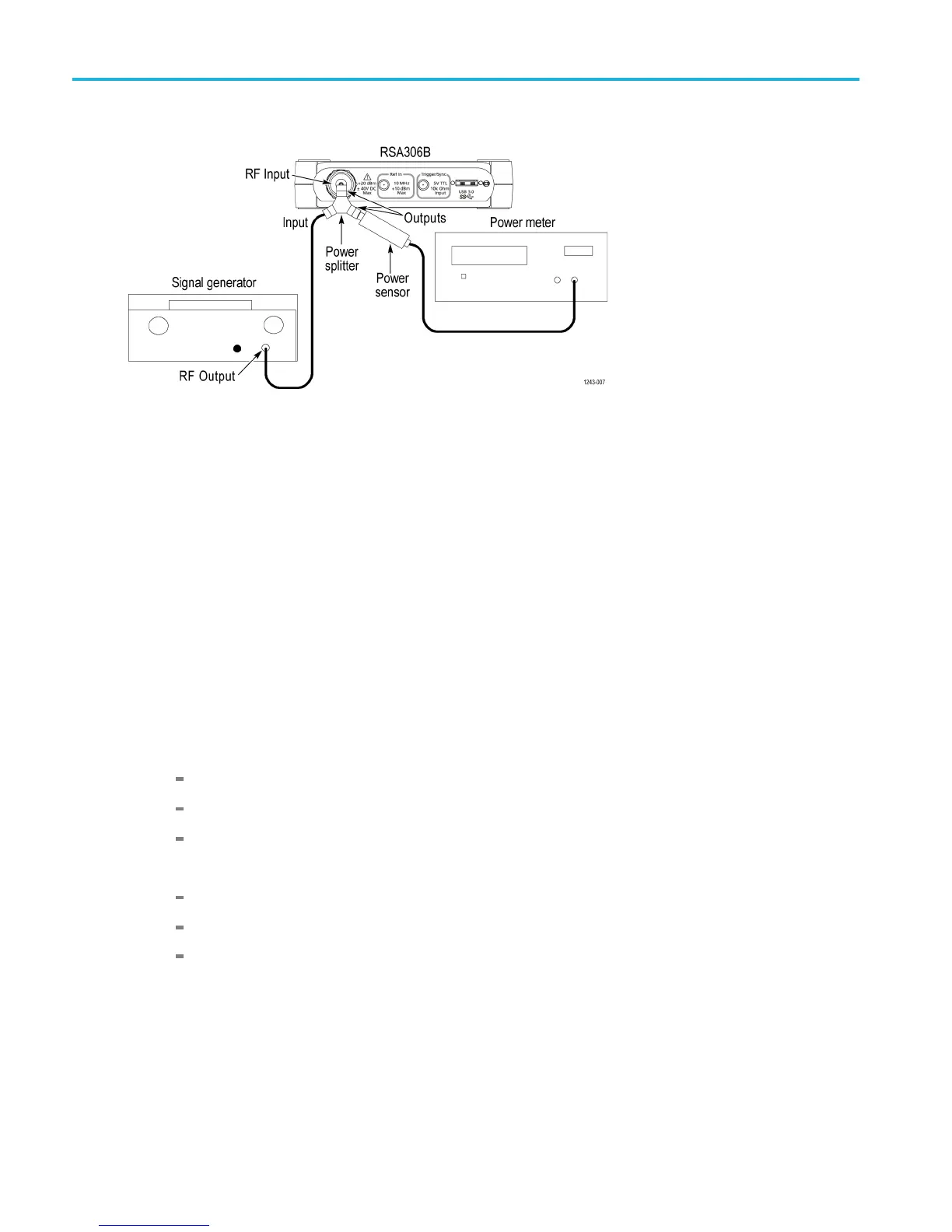